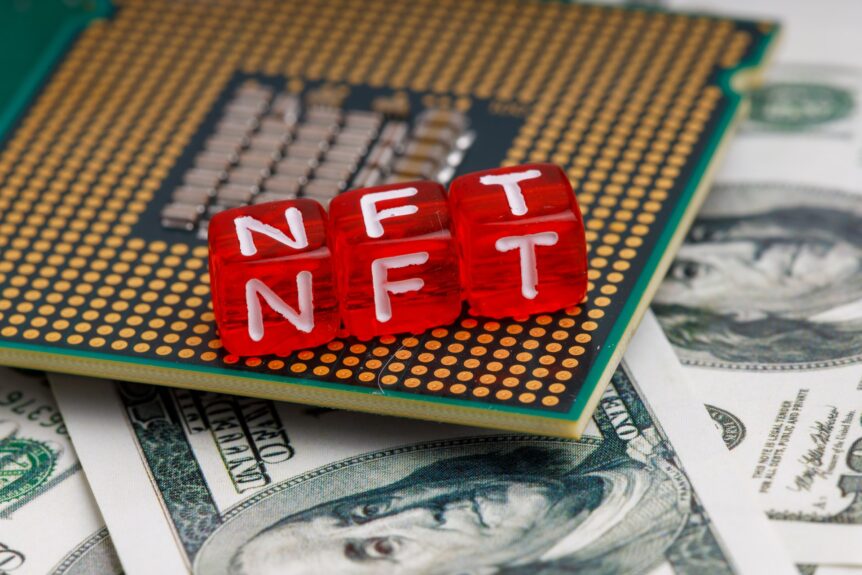NFT stands for Non-Fungible Token, which is a type of digital asset designed to ensure ownership rights and transferability of unique assets. They are also called digital collectibles. A fungible token is one in which the value of a given asset is determined by its unique identity, as opposed to a non-fungible token, in which the value is derived from the characteristics of the asset.
NFTs are unique tokens for they are designed to prevent token duplication. This is possible because each NFT can be connected to a specific item, like a piece of art, a piece of writing, a video, other digital goods, an event ticket, or a real-world object. Each token represents one unique thing and the value of the token increases with the unique value of the represented object. The token is attached to the object in such a way that it cannot be duplicated without changing the attachment.
The concept of non-fungible tokens is a part of blockchain technology. Since the creation of cryptocurrencies, the idea behind creating a cryptocurrency was the idea of having a currency that could replace the existing currency. The problem with this was that everyone had an equal claim on the available currency. As a result, the value of the currency became irrelevant. This is where the concept of non-fungible tokens came into existence. A non-fungible token allows for ownership rights and transferability of unique assets.
The main difference between the fungible token and the non-fungible token is that the fungible token can be shared among multiple users, while the non-fungible token can only be used by the person who created the token. As of now, the ERC721 standard is the most popular and widely accepted method of creating non-fungible tokens. Some of the most popular projects that are using non-fungible tokens include CryptoKitties, Decentraland, Loom Network, and Gods Unchained.
Things To Consider
NFT is short for Non-Fungible Token, a blockchain-based asset class. It allows users to transfer ownership rights to digital assets, instead of transferring ownership of physical objects. In this case, NFTs are used as a form of digital property ownership. A lot of people are familiar with collecting items, such as Pokémon cards or trading card games. Now, NFTs are becoming popular among cryptocurrency traders, and the market is growing rapidly. If you are interested in this field, there are a few things to keep in mind.
-
- An NFT is a token that represents an asset. This asset is unique in its own way. The NFT system is based on the blockchain, and it is designed to make sure that each token is unique. In this way, each NFT can be tracked on the blockchain.
-
- If you want to use NFTs, you need to learn how to trade them. Trading means exchanging tokens from one user to another. When you create an account on an exchange, you can trade with other users.
-
- You should understand that NFTs can be used to represent anything that you own. Some people collect a series of different cards. Others collect baseball cards. NFTs are the same. You can represent something that you own, whether it is a collection of Pokemon cards, baseball cards, or a car.
Should You Buy NFTs?
If you have an idea for a product, the first thing you’ll need to decide is whether it’s feasible. That’s where the question of risk comes into play. Being that NFTs are such a new technology, it may be wise to limit your investments to amounts you’re willing to lose to get started. It’s your personal decision to spend money on buying a piece that holds personal meaning to you.
You’ve probably heard the expression, “A rising tide lifts all boats,” meaning that the benefit of rising income or wealth spreads across a community, bringing its people prosperity. But if a rising tide just floats boats, it wouldn’t lift all of them. This is exactly how digital collectibles, or NFTs, work. Their value is based solely on demand. If there isn’t enough interest in an asset, its price won’t be high enough to cover the cost of creating, shipping, and storing it.
It is important that before you get started, you’d better make sure you’ve done your homework. To learn how to buy NFTs, you should understand the risks that come with them. You also need to keep an eye on your money, because you never know when the cryptocurrency bubble will pop.

